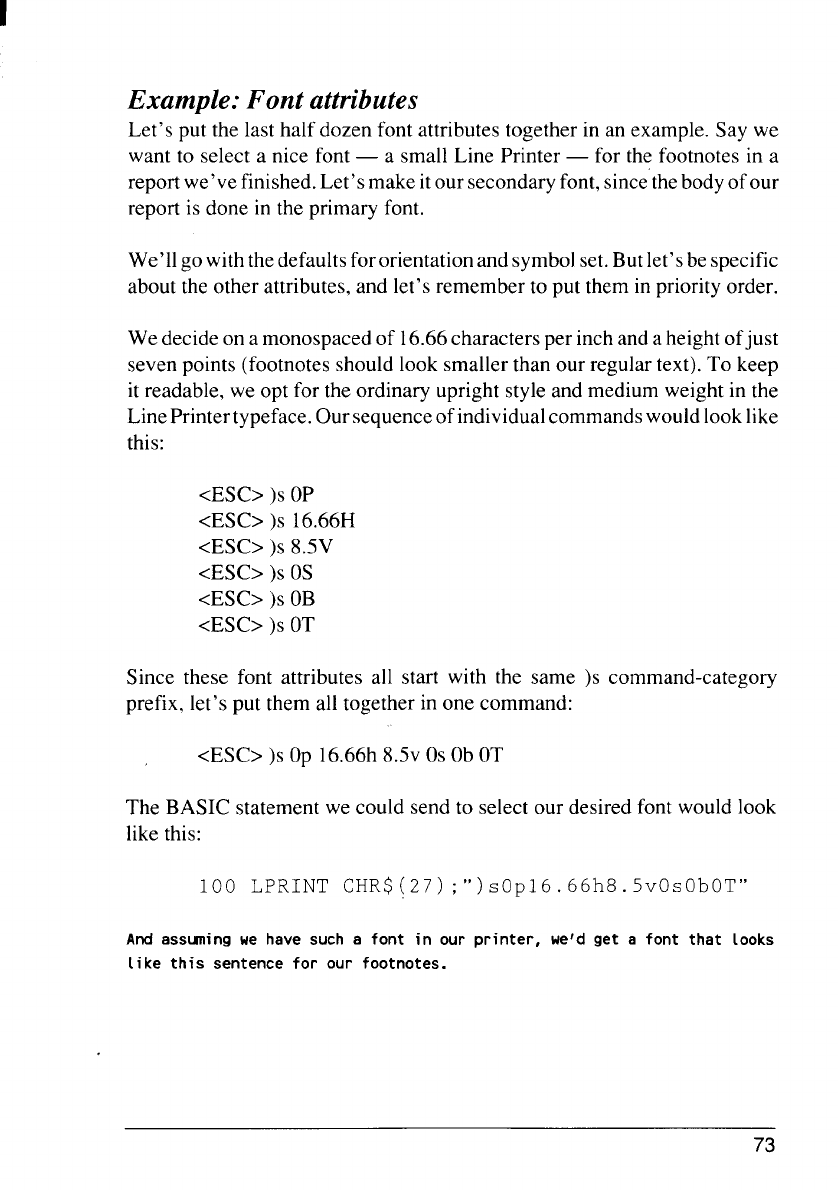
Example: Font attributes
Let’s put the last half dozen font attributes together in an example. Say we
want to select a nice font — a small Line Printer — for the footnotes in a
report we’ve finished.Let’s make itoursecondary font, since’thebodyofour
report is done in the primary font.
We’ll go with the defaultsfororientation and symbolset.Butlet’sbe specific
about the other attributes, and let’s remember to put them in priority order.
We decide on a monospaced of 16.66characters per inchand a height ofjust
seven points (footnotes should look smaller than our regular text). To keep
it readable, we opt for the ordinary upright style and medium weight in the
Line Printertypeface. Our sequenceofindividualcommandswould look like
this:
<ESC>
)S OP
<ESC>
)S 16.66H
<ESC>
)S 8.5V
<ESC>
)S OS
<ESC>
)S OB
<ESC>
)S OT
Since these font attributes all start with the same )s command-category
prefix, let put them all together in one command:
<ESC>
)S op 16.66h 8.5v os ObOT
The BASIC statement we could send to select our desired font would look
like this:
100 LPRINT CHR$ (27);“)
sopl 6. 66h8 .5vOsObOT”
And assuning we have such a font in our printer, we’d get a font that looks
1i
ke this sentence for our footnotes.
73


















